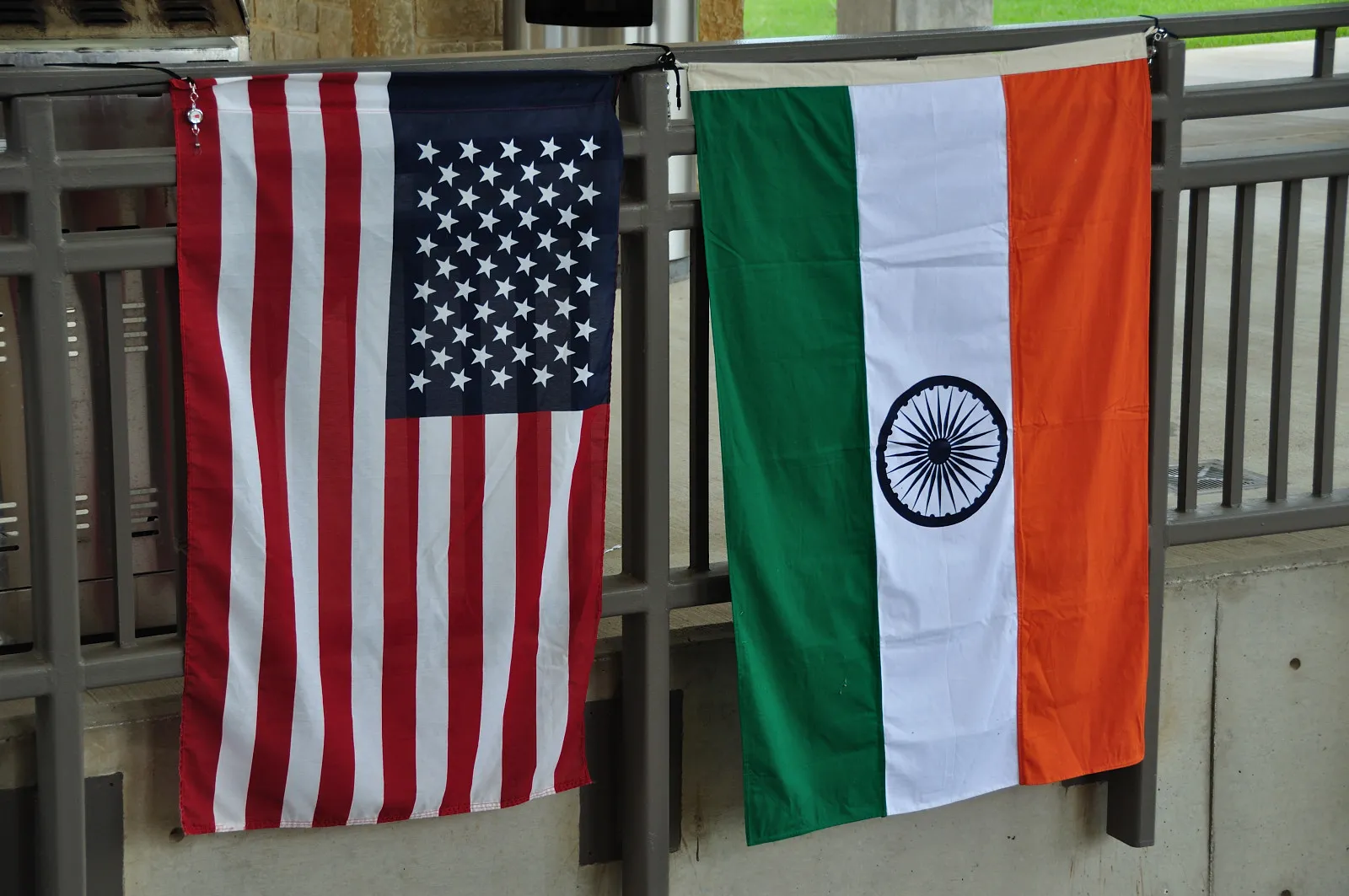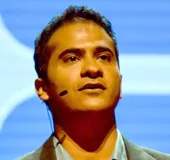-
CENTRES
Progammes & Centres
Location
Analysing the past India-US 2+2 dialogues as the fourth edition of the same in underway.

On first hearing it, the 2+2 name seems far too lucid a term for the profoundly strategic high-level bilateral talks that they are. The focused discussions between foreign and defence counterparts have become a regular affair since the inaugural 2+2 took place in September 2018, in New Delhi, between then late External Affairs Minister, Sushma Swaraj and former Defence Minister, Nirmala Sitharaman, with former US Secretary of State, Mike Pompeo, and former US Secretary of Defense, James Mattis.
Both sets of foreign and defence representatives will look to leverage the dialogue to undertake a comprehensive review of cross-cutting issues in the bilateral partnership pertaining to foreign policy, defence, and security.
The fourth edition of the 2+2 between the United States and India takes place this week in Washington D.C., albeit a first under the Biden administration, as Secretary of State, Tony Blinken, and Secretary of Defense, Lloyd Austin, host their Indian counterparts, External Affairs Minister S. Jaishankar and Defence Minister Rajnath Singh. In a sudden announcement, the chief principals, President Biden and Prime Minister Modi will “open” for their defence and foreign subordinates through a virtual meeting that precede the formal 2+2 discussions.
There is a lot to be expected to be on the agenda. India and the United States will commemorate their 75th year of diplomatic relations as both democracies will reiterate their priorities to securing a “free, open, and prosperous Indo-Pacific region”, the unofficial motto but most stated credo of the Quad— a strategic security dialogue between Australia, India, Japan, and the United States. But more than China, the elephant in the room, will be the bear (Russia), as the conflict exacerbates in Ukraine, making Moscow the global pariah. India’s multiple abstentions at the United Nations have been a point of umbrage for the United States, Russia’s traditional geopolitical adversary and the architect of the Western-led sanctions. Although the administration has understood India’s view, if not fully agreed with it.
Also, on the agenda will be the unfolding turmoil in South Asia, as Pakistan is currently “Prime Minister(less)”, as it battles skyrocketing inflation and an economic malaise. Unfortunately, Islamabad isn’t the only one, Sri Lankans have protested a similar fiscal woe at home, and a clarion call mounts on a change of guard in Colombo. While it’s neighborhood first for India, the neighborhood watch is pertinent as economic crisis in the least economically integrated region of South Asia can also mean increased security concerns.
If there is a sense of American ennui with New Delhi on Russia, where the strategic interests converge the most will be on China, as a belligerent Beijing since 2020 (with the Galwan Valley clashes) has been in the eye of the storm for all four Quad partners.
Both sets of foreign and defence representatives will look to leverage the dialogue to undertake a comprehensive review of cross-cutting issues in the bilateral partnership pertaining to foreign policy, defence, and security. The short-term objectives will be China, Russia with regards to the crisis in Ukraine, security in the Indo-Pacific, regional stability in South Asia and from Washington’s perspective, eschewing New Delhi’s perceived dependence on Russian military and alacrity for cheaper energy imports. The long-term vision will be to provide strategic guidance and a vision to further consolidate the relationship, which celebrates the diamond jubilee. India has now modeled the 2+2 formats with Russia, Japan, and Australia. Ahead of the fourth 2+2 dialogue, here is a look back at the previous three India-U.S. 2+2 dialogues.
India held its first 2+2 dialogue with the US in September 2018 in New Delhi. The launch of the 2+2 with the US was seen as a “reflection of the shared commitment” by both governments, and the evolution of the relationship that went from 50 years of lukewarm estrangement to robust strategic engagement. The Trump administration had leveraged the Obama administration’s ‘Pivot to Asia’ policy and codified the term “free and open Indo-Pacific”, which Prime Minister Modi had expounded on at the Shangri-La dialogue the same year with the acronym SAGAR (the Hindi word for Ocean) and stands for Security and Growth for All in the Region.
The first 2+2 also saw highlights of the signed agreement for the Communications Compatibility and Security Agreement (COMCASA), which deals with secure military communication and increases the ability to communicate safely with all US-made equipment used by foreign military, such as in Japan and Australia, essential to Quad synergy. Both sides welcomed the inclusion of India by the United States amongst the top tier of countries entitled to license-free exports, re-exports, and transfers under License Exception Strategic Trade Authorization (STA-1) and also committed to explore other means to support further expansion in. The four representatives began deliberations on an Industrial Security Annex (ISA) that would support closer defence industry cooperation and collaboration and committed to creation of a new, tri-services, leveraging closer military to military ties.
New faces for India in this edition of 2+2 as the BJP-led government’s second consistent win in the 2019 Lok Sabha elections meant a cabinet reshuffle. Former Home Minister Rajnath Singh was now in charge of Defence and former Foreign Secretary and Career diplomat, S. Jaishankar, came out of the private sector to be formally inducted as the minister shepherding the External Affairs portfolio. Former Secretary of the Army, Mark Esper, replaced Jim Mattis as Secretary of Defense. Both sides agreed to deepen cooperation to address regional and global issues, such as terrorism, climate change, and work towards a “free and open Indo-Pacific”, while strengthening people-to-people ties, and welcomed the unprecedented levels of cooperation between the US and Indian militaries, made possible through enhanced exercises such as the first-ever tri-service TIGER TRIUMPH exercise.
Ministers Singh and Jaishankar welcomed their counterparts for the third 2+2 Ministerial Dialogue in New Delhi. The four representatives welcomed the second Quad meeting at the Foreign Minister-level and amidst the raging COVID-19 pandemic, both Washington and New Delhi reaffirmed US–India healthcare collaboration to develop vaccines, therapeutics, and essential medical equipment. The main outcome of the meeting was the signing of the Indo-US Basic Exchange and Cooperation Agreement (BECA) for geo-spatial coordination.
India’s Minister of Defence Rajnath Singh and Minister of External Affairs Dr. S. Jaishankar welcomed US Secretary of State Michael R. Pompeo and Secretary of Defense Dr. Mark T. Esper to New Delhi for the third annual US-India 2+2 Ministerial Dialogue. BECA, as it is known, would allow India and the US to access a wide variety of geospatial data from each other, such as detailed maps, nautical and aeronautical charts, as well as imagery. The agreement created a framework for classified data to be shared. Since then, India held its first 2+2 dialogue with key Quad members in Australia and Japan and expanded this format to dealing with Russian counterparts as well.
The fourth edition of the 2+2 will seek to reaffirm a robust, forward-looking vision for the India-US strategic partnership in the Indo-Pacific on key issues pertaining to energy, security, climate, science and technology cooperation, public health, and people-to-people ties.
The 2+2 format has been conducive to shift the focus from the optics of high-level state visits to creating a mechanism whereby the strategic arm of government in the foreign and defence ministers can create a mechanism to produce tangible outcomes, while being cognizant of strategic sensitivities and existing foreign policy stances (such as India’s hesitation to joining military and security pacts).
Like the previous three editions, the fourth edition of the 2+2 will seek to reaffirm a robust, forward-looking vision for the India-US strategic partnership in the Indo-Pacific on key issues pertaining to energy, security, climate, science and technology cooperation, public health, and people-to-people ties.
The views expressed above belong to the author(s). ORF research and analyses now available on Telegram! Click here to access our curated content — blogs, longforms and interviews.

Akshobh Giridharadas was a Visiting Fellow based out of Washington DC. A journalist by profession Akshobh Giridharadas was based out of Singapore as a reporter ...
Read More +